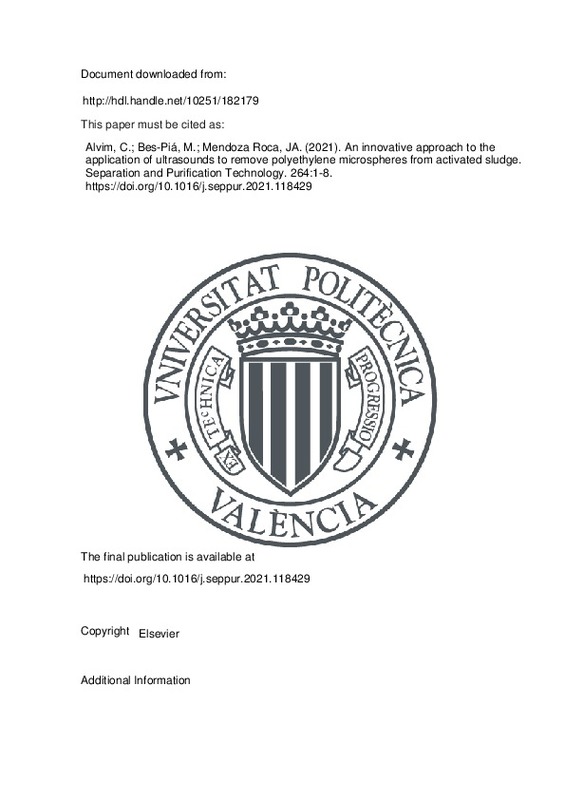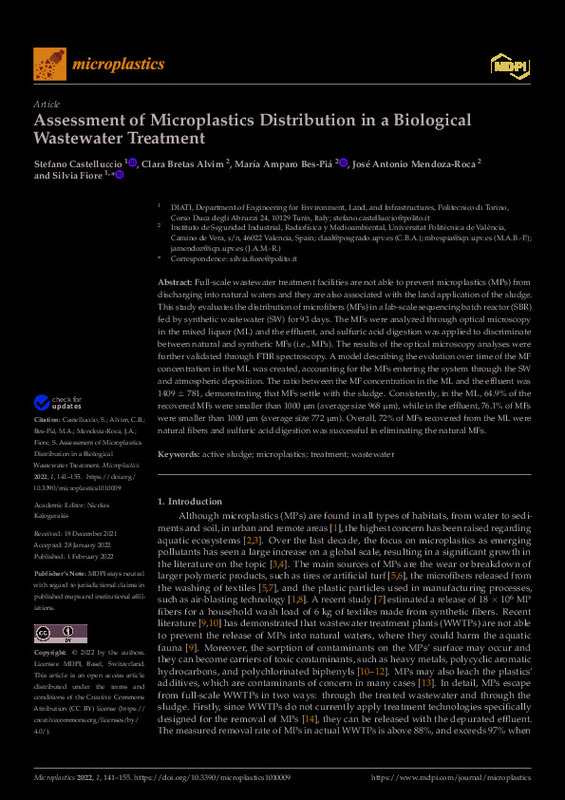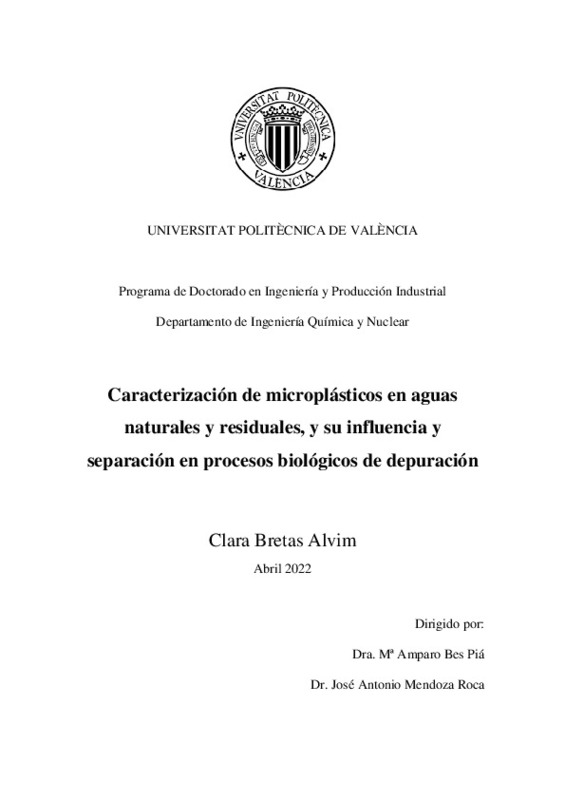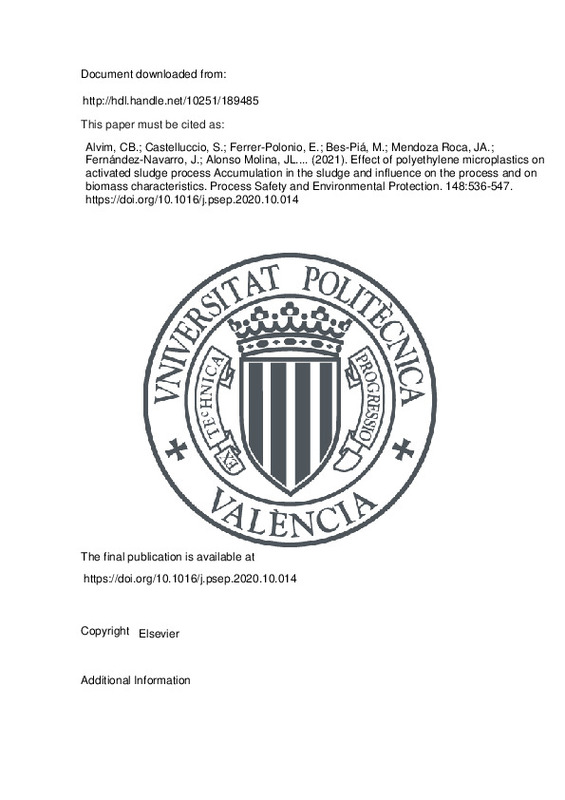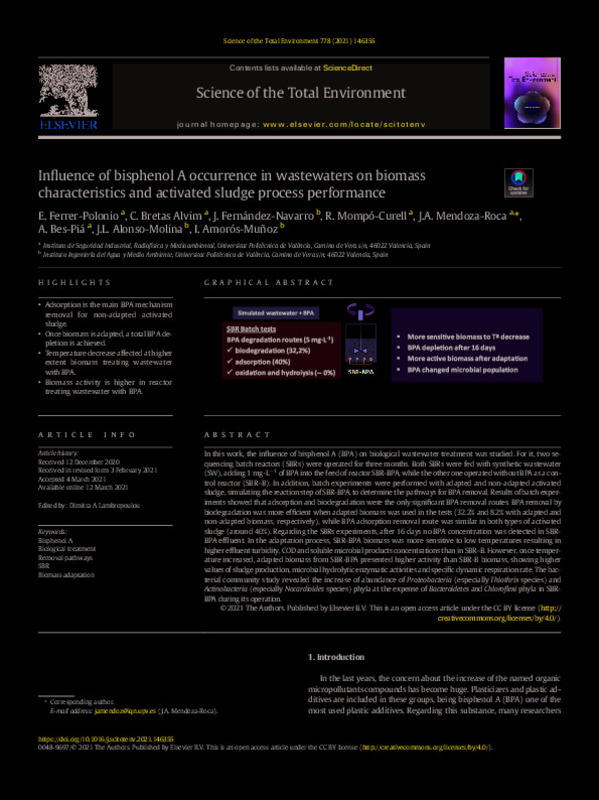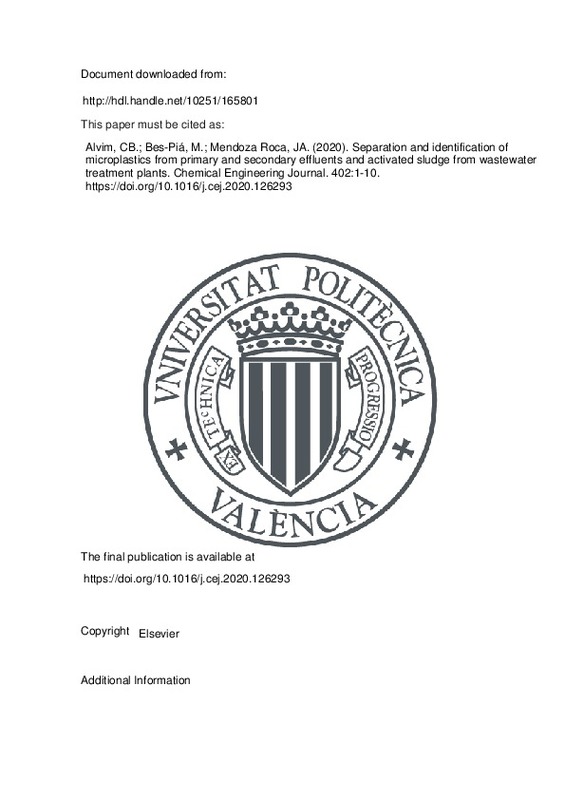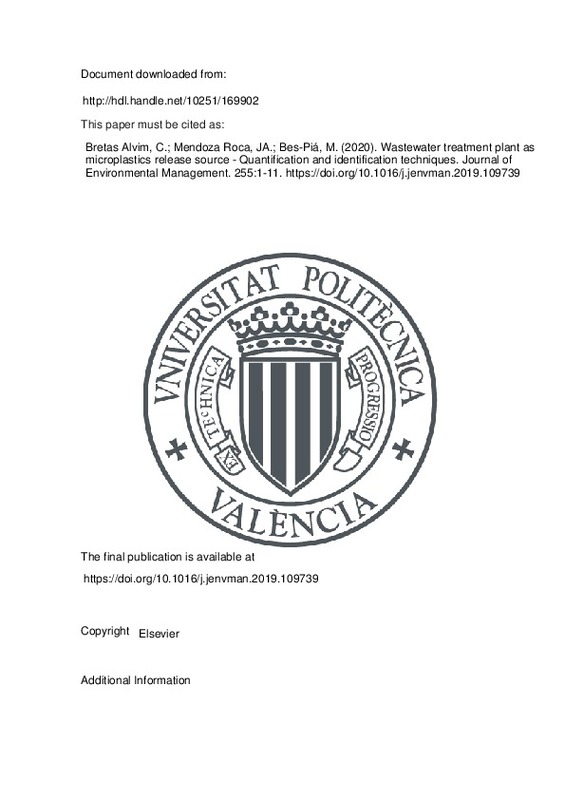

Listar por autor "Bretas Alvim, Clara"
RiuNet: Repositorio Institucional de la Universidad Politécnica de Valencia
- RiuNet repositorio UPV
- :
- Listar por autor
JavaScript is disabled for your browser. Some features of this site may not work without it.
Buscar en RiuNet
Listar
Mi cuenta
Ayuda RiuNet
Admin. UPV
Listar por autor "Bretas Alvim, Clara"
Mostrando ítems 1-11 de 11
-
Alvim, Clara; Bes-Piá, M.A.; Mendoza Roca, José Antonio (Elsevier, 2021-06-01)[EN] During the secondary treatment of Wastewater Treatment Plants (WWTP) previous studies have reported that microplastics (MPs), which correspond to plastic fragments smaller than 5 mm, are mostly retained in the activated ...
-
Castelluccio, Stefano; Alvim, Clara Bretas; Bes-Piá, M.A.; Mendoza Roca, José Antonio; Fiore, Silvia (MDPI AG, 2022-02-01)[EN] Full-scale wastewater treatment facilities are not able to prevent microplastics (MPs) from discharging into natural waters and they are also associated with the land application of the sludge. This study evaluates ...
-
Bretas Alvim, Clara (Universitat Politècnica de València, 2022-09-02)[ES] Los microplásticos (MPs) son partículas de material plástico menores que 5 mm que están siendo identificadas en el agua, tierra y aire. La presencia de estos contaminantes emergentes en el medio ambiente supone una ...
-
Navajas Valiente, Samuel (Universitat Politècnica de València, 2021-09-01)[ES] El presente TFG tiene como objetivo lograr la separación y el análisis de los microplásticos contenidos en los fangos de las estaciones depuradoras de agua residual. Para ello, se han empleado diferentes técnicas ...
-
Alvim, C. Bretas; Castelluccio, S.; Ferrer-Polonio, Eva; Bes-Piá, M.A.; Mendoza Roca, José Antonio; Fernández-Navarro, J.; Alonso Molina, José Luís; Amoros, Inmaculada (Elsevier, 2021-04)[EN] According to previous research, it has been proved that wastewater treatment plants (WWTPs) can retain more than 90 % of the MPs contained in wastewater. However, a significant fraction of the MPs removed in WWTPs is ...
-
Alvim, C. Bretas; Bes-Piá, M.A.; Mendoza Roca, José Antonio; Alonso Molina, José Luís (Elsevier, 2023-06)[EN] Traditional drinking water treatment plants (DWTP) are not specifically designed for removing microplastics (MPs) from drinking water. Therefore, this emergent contaminant has been identified in water sources and final ...
-
Ferrer-Polonio, Eva; Bretas Alvim, C.; Fernández-Navarro, J.; Mompó-Curell, R.; Mendoza Roca, José Antonio; Bes-Piá, M.A.; Alonso Molina, José Luís; Amoros, Inmaculada (Elsevier, 2021-07-15)[EN] In this work, the influence of bisphenol A (BPA) on biological wastewater treatment was studied. For it, two sequencing batch reactors (SBRs) were operated for three months. Both SBRs were fed with synthetic wastewater ...
-
Alvim, C. Bretas; Navajas Valiente, S.; Bes-Piá, M.A.; Mendoza Roca, José Antonio (Elsevier, 2022-07-15)[EN] Anthropogenic microparticles (e.g., microplastics) are present in sewage plants, especially in sludge streams. However, the lack of standardized protocols to scrutinize the presence of anthropogenic microparticles in ...
-
Bretas Alvim, Clara (Universitat Politècnica de València, 2021-10-21)[ES] El presente Trabajo Fin de Máster tiene como objetivo evaluar el empleo de técnicas de tinción con los reactivos Rosa-Bengala y Rojo Nilo, para la identificación de microfibras (< 5mm) naturales y sintéticas (microplásticos ...
-
Alvim, C. Bretas; Bes-Piá, M.A.; Mendoza Roca, José Antonio (Elsevier, 2020-12-15)[EN] Although wastewater treatment plants can retain a high percentage of microplastics (MP) arriving at the facilities, no method for extracting and characterizing these microparticles has been still standardized in these ...
-
Bretas Alvim, C.; Mendoza Roca, José Antonio; Bes-Piá, M.A. (Elsevier, 2020-02-01)[EN] The high presence of microplastics (MPs) in different sizes, materials and concentrations in the aquatic environment is a global concern due to their potential physically and chemically harm to aquatic organisms ...
Mostrando ítems 1-11 de 11

Universitat Politècnica de València. Unidad de Documentación Científica de la Biblioteca (+34) 96 387 70 85 · RiuNet@bib.upv.es


